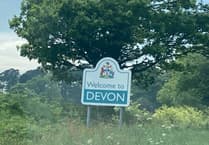ALTHOUGH a common site in the South Hams, pheasants are not native birds, but an Asian species from around the Black Sea and China.
They are reared here as game birds. The young birds are bred in pens and released over the summer ahead of the shooting season that runs from October to the end of January.
With modern rearing methods, using imported eggs or young birds from Europe, the number of birds released has increased.
Around 50 million are released into the UK countryside each year under licence by Defra for recreational shooting.
According to the RSPB, the number of pheasants released annually is estimated to be 10 times higher than in 1961.
This greatly exceeds any similar releasing practice for gamebirds anywhere else in the world.
For European countries, the second-largest release of pheasants is in France with 10-15 million birds, compared to the UK total of 50 million. Nearly half the pheasants in Europe are in the UK.
By weight, the amount of non-native gamebirds in the UK countryside is equal to all our native birds put together.
The ecological impact of such high numbers of non-native birds is of concern to conservationists.
The released birds are provided with grain and can eat up to 1 lb of grain a day, but pheasants are also efficient foragers consuming insects, worms, berries, seeds, acorns, nuts and plants, and even rodents and reptiles.
These large birds therefore compete with our native birds for food.
The main constraining factor for wild bird populations is the availability of food which is already scarce in our intensively managed landscapes.
Defra has now listed pheasants along with grey squirrel, American crayfish and Japanese knotweed as causing harm to native species.
Such high numbers of free-ranging birds can also be a source of disease for native birds. Last summer’s epidemic of avian flu in wild birds in the UK saw poultry housed indoors to stop the transmission of bird flu, but captive-bred gamebirds have continued to be released into the countryside in very large numbers.
Might these birds create another large reservoir of the virus to re-infect wild birds?
In response to the climate and nature crisis, the government has set legally binding targets to halt the decline in species populations of our native wildlife by 2030 in the Environment Act 2021.
More than a quarter of birds are under threat of extinction in the UK, and 70 of the UK’s 245 bird species have been added to the Red List of threatened species.
In its Environmental Improvement Plan 2023, the government has promised “To restore our biodiversity, we need to enhance our biosecurity. The risk of pests, pathogens, and invasive non-native species is increasing, as we have seen just this winter when the UK has experienced its largest outbreak of bird flu.”
The lack of oversight on pheasant releases is not consistent with the government’s stated plan.
Defra should take another look at the rules concerning pheasant releases to manage the numbers of free-ranging birds, if the government is serious about protecting nature.





Comments
This article has no comments yet. Be the first to leave a comment.